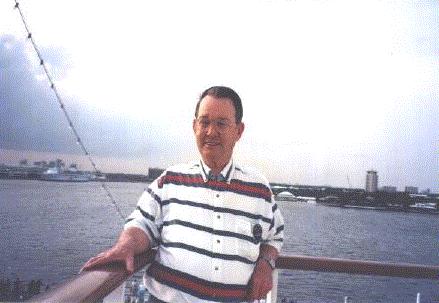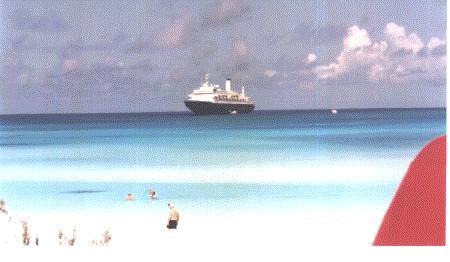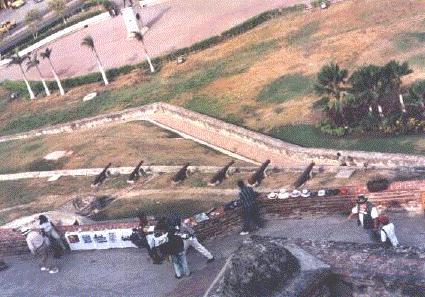|
Fort Lauderdale


Halfmoom Kay

Cartagena Columbia

Above looking down
Colombia was originally populated by the Chibchas (CHEEB chat)
**********************************************************
Indians, who lived in the mountains of Colombia long before the Americas were discovered. The Chibchas were an advanced civilization and are now referred to as 'Pre Columbian." They were excellent goldsmiths and skilled in weaving and pottery. Unfortunately, this was their downfall, since the explorers plundered the Chibchas for their emeralds and gold.
Cartagena itself was founded in 1533 by Don Pedro de Heredia.
Throughout the 16th century, Spain governed it through a system of Viceroys. When the Spanish conquistadors discovered that the interior of Colombia was rich in gold and emeralds, wealth of all kinds flowed into Cartagena for shipment to Spain. This wealth soon invited pirate attacks. In defense of the city, King Felipe II ordered a protective wall be built around the city.
Streets of the city were intentionally made narrow and crooked, designed for protection during assault. Because of its immense wealth, Cartagena was victim to five sieges during the 16th century, the most famous led by Sir Francis Drake in 1586. Drake made it into the Cartagena harbor, but accepted a 10 million peso ransom for not burning the city.
After this, Spain redoubled its effort to fortify Cartagena, and this
is when the massive stone wall around the Old City was constructed.
When the wall was completed in 1686, Spain had spent 59 million ounces of gold to protect Cartagena. But, this turned out to be a good investment!
When England attacked again in 1741, with 21,000 men and 186 ships, Cartagena successfully defended itself. Led by Admiral Vernon and accompanied by the half brother of George Washington, Lawrence Washington, this imposing fleet and powerful British
army could not break the defense. Mount Vernon is named
in the Admiral's honor.
Many forts were built to defend the city. The two
that guarded the bay were San Fernando and San Jose. A
massive chain stretched between these two forts kept pirate
vessels from easily entering Cartagena's harbor.
Towering over all of these forts is the powerful fortress
of San Felipe de Barajas, 135 feet above sea level.
It was begun in 1657, captured and destroyed by the French in 1697.
Rebuilt between 1762 and 1769, it remains an impressive structure
in Cartagena. It is now the site of a modern "sound and light"
spectacle depicting the bloody history of Cartagena against
the backdrop of the fort.
In 1811, Cartagena tried unsuccessfully to declare independence
from Spain. It was captured by Spanish loyalist troops under Pablo
MoriIlo after a long siege in 1815, earning it the title
of "the Heroic City" or, as Colombians refer to it, "La Heroica."
It wasn't until 1819, when Simon de Bolivar lead his attack that
Iiberated Cartagena, and Colombia, once and for all. November 11,
the anniversary of the city's declaration of independence from Spain,
is the city's principal celebration. On this day, the population
parades through the streets in fancy dress costumes and masks.
The other popular feast is the Virgin of la Candelaria on February 2,
when pilgrims walk up the 500-foot height of the 17th century
monastery of La Popa bearing lighted candles.
Today, Cartagends wealth is largely centered around
platinum and timber from the headwaters of the Atrato
and San Juan Rivers; coffee from the Sierra Nevada and
oil products piped from Barrancabermeja, 335 miles up the
Magdalena River.

Close up view of the wall around the city
Go back








